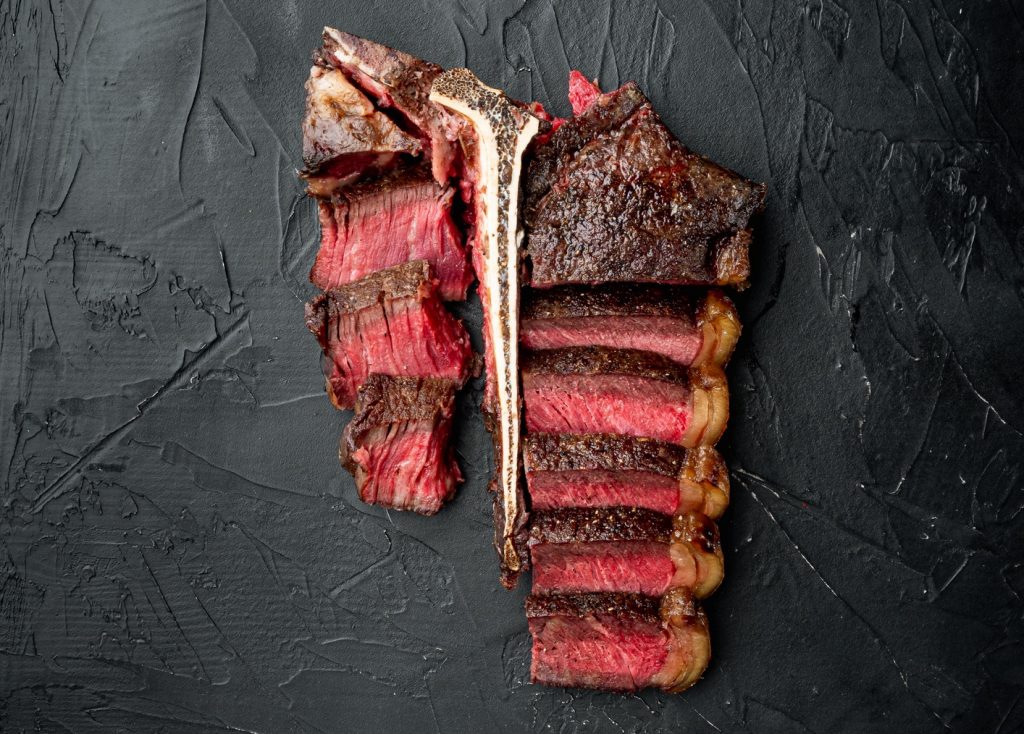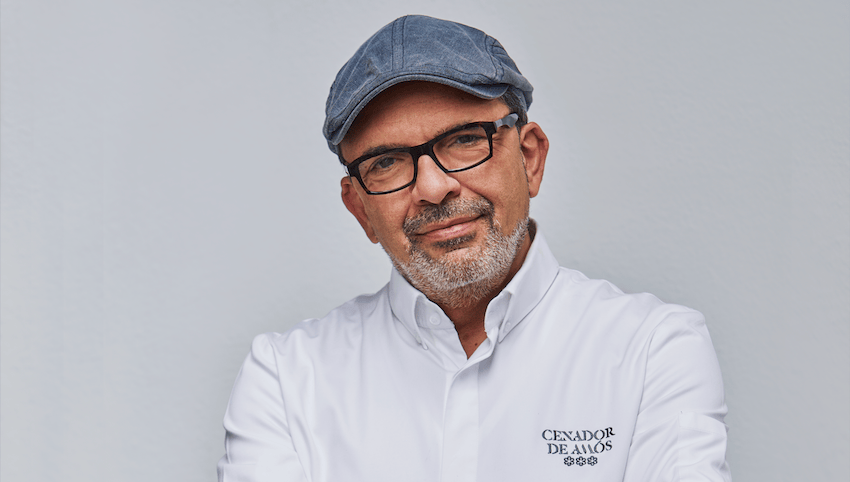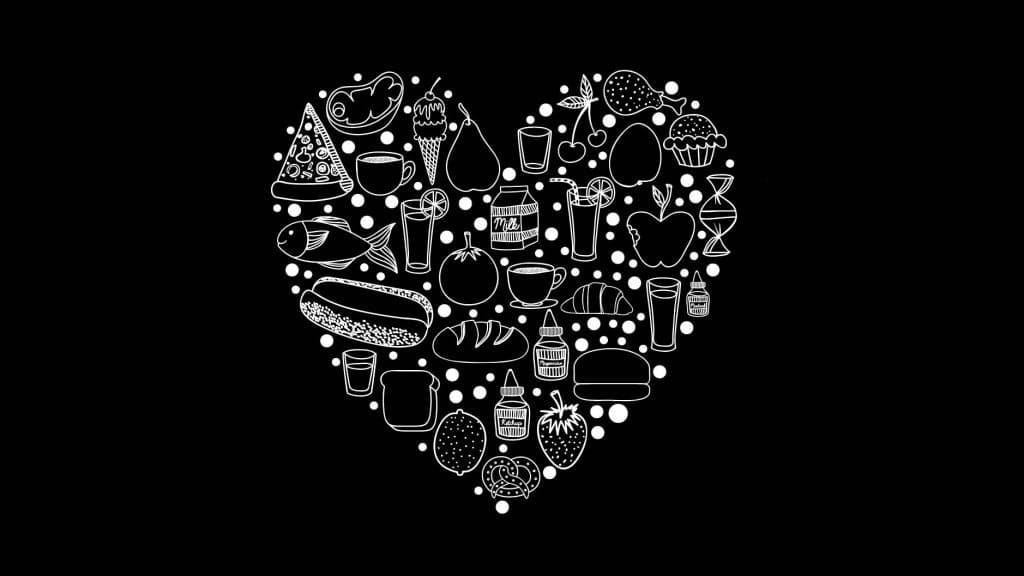
He etched his name into the global gastronomy world with a radical nose to tail approach to cooking fish, exhorting consumers to eat eyeballs, sperm and livers. Since 2016 from his small Sydney restaurant Saint Peter and later through his 2019 book The Whole Fish Cookbook, Joshua Niland has steadily gone about starting a revolution in how the world perceives fish.
The headline grabbing parts of his philosophy were accompanied by a thoughtful curiosity as he experimented with ageing fish and making charcuterie with offcuts; the lingering attention he captured for the more shocking ideas has given the Australian chef a platform to share his message of sustainability and responsible behaviors around our sea and fish stock.
Accepting that most people are uncertain when it comes to fish – the smell and texture is unfamiliar and we are often not sure how to handle it, he is challenging conventions. He sees his purpose to be changing people’s perception of the value of fish. “It is really to broadcast a message that the way we have behaved with fish in the west is unacceptable, it is so ignorant and neglectful and pretty disgusting,” says Niland. “We settle to just take the center out of the fish and then set everything else aside.”
A nurturing start
Though he didn’t grow up in a home of culinary excellence – “everybody had a meat and three veg upbringing and we were spoilt to have a hot cooked meal a day” – Niland’s route into cooking was mapped out early.
When he was eight years old, he was diagnosed with a cancer that meant he had to have one of his kidneys removed and spent months undergoing chemotherapy. His mother nurturing him back to health taught him the importance of being cared for. “I think the experience of a meal being specifically cooked for you, at a time when you feel really lousy, can be very impactful; even something as insignificant as a toasted sandwich or chicken pie,” he says. “I was eating the food made by somebody extremely worried and scared and I think that in itself – more than any book or magazine – was critical to my decision to become a chef.”
He had his first taste of the kitchen aged 14 when he went to work in a local café, making coffees, washing dishes and doing basic kitchen tasks. Just over a year later he left school after year 10, to pursue his dream of a cooking career with his parents’ blessing. “They knew it was what I wanted and that I had my head screwed on and I desperately wanted to be in a professional kitchen,” he explains.
After leaving school he went to work at The Brewery Restaurant in Newcastle, half an hour from his home in Maitland, a small city equidistant from the beach and the Hunter Valley wine country. It was to provide him a with a perfect introduction to his chosen career path – the real basic 101 of a kitchen, as he describes it.
“The people I worked for invested so much energy and time in training and I think that is quite a novel thing today,” he says. “To be led very directly, to be shown how to make mayonnaise or fresh pasta from scratch or how to wash your hands after each task. It was all drummed into me really gently.”
He knows he was lucky to land his first job in a nurturing kitchen and the experience has helped to shape Niland as a manager overseeing the training of young chefs in his own kitchen. “My overarching sentiment to young chefs now is to make sure you go and work somewhere where they are as desperate to teach you as you are to learn,” he says.
Precision and risk
Aged 17, the big city beckoned as he moved to Sydney keen to learn in the big kitchens. “It was a rude shock and I knew it would be hard, but I also knew that if I was ever going to aspire to what was in my head, I needed to push myself,” he says. The job was in the 300-seat Glass Brasserie. “I was so glad I went there because it taught me to be very organized. When you do 250 for lunch and 300 for dinner and then 200 again for lunch the next day you get pretty good.”
It was a professional and personal journey of discovery. “At work I moved around the kitchen; from pastry to larder to meat and fish and as a second-year apprentice, aged 17, I thought that was a pretty good achievement. Outside work I was just getting my bearings looking after myself, doing my own washing and getting around,” he says.
Next, came the chance to join the kitchen in Est, a fine dining high achieving restaurant and he spent 18 months working in the kitchen. “By the time I was 19 years old I found myself expediting food and leading service with a brigade that was twice my age. I was flattered and honored to be in that position but I felt I got there too quickly,” he reflects.
What he did pick up from the experience was a curiosity about fish. “I noticed how meticulous and rigorous the preparation and the service was; I enjoyed the idea of needing to have this really sharp acumen to be able to do that station,” he says. “So I told my chef at the time that I wanted to be more immersed in fish, just because I found it so difficult. He said: ‘You should go and work for Stephen Hodges’.”
Hodges was a maverick chef with a restaurant called Fish Face in Sydney. “He was your typical crazy chef, really aggressive,” recalls Niland. “He would drink a lot and always had a cigarette in his mouth.”
Hodges would give him a unique learning experience that was unlike anything he had experienced before. “If you poured nothing into your work Stephen would pour nothing into you, but because I cared so much about what I did he gave me his career’s worth of knowledge in the space of 18 months. It was amazing that somebody would trust somebody with so much information; he was so generous with his teaching.”
Where Est aimed for consistency over creativity, Fish Face encouraged experimentation and failure. In addition to a set menu of Hodges’s greatest dishes there was a daily changing chalk board menu featuring whatever came in from the fishermen on the day.
Chefs were encouraged to be creative and put their own ideas on the board. “There were nights where people said, ‘this is rubbish’ but other nights they loved what we cooked,” says Niland. “There aren’t enough venues where you are allowed to fail and you learn so much about yourself; you get critical feedback from the chef and the guest. There was no editing screen before you put it on the board because Stephen wanted it to be an environment where you can fail.”
One specific conversation with Hodges shaped Niland more than either of them could have imagined at the time. “One night Steve said to me, ‘you need to start thinking of tuna like it’s a cut of beef and mahi mahi like a cut of lamb’,” he recalls. “He said: ‘With all the cookbooks you have read, I am sure you could come up with a beef recipe for me. Stop thinking fish is fish and start thinking about it more like that’.”
Real meaningful change
It was a casual conversation, buried for years after, but it always stuck with Niland and planted a seed that started to take shape years later in his career when Niland made it the essence of his book and started to pioneer the concept of fish butchery.
“Why can’t we see fish as meat, why can’t we take reference and inspiration from the meat world to affect change to the way we handle fish?” he asks. He is looking for meaningful systemic change. “Right now, when we think of fishmongering, we think of the dealing and trading in a commodity and if we continue to think of it like that then we’ll continue to see the damage that has been done for a very long time.”
He wants fishmongers to act more like butchers, demystifying what they are selling for consumers. “Customers who go to a fishmonger should ask the monger ‘what is good today’, they are the ones who have been up early to find the very best fish to put in the shop,” he says. “Fishmongers need to accept they need to be butchers; they need to have that conversation.”
The only way to affect real meaningful change, he says is to change our perception of fish – stop the fish getting caught as a commodity and start seeing it as a luxury item that fetches high prices. “Ultimately we need to start paying for something that won’t be there forever,” he says. “
It is true to say that there is a growing awareness of the plight of the ocean and the need to be more sustainable. However, documentaries such as this year’s Netflix release Seaspiracy have got it wrong, he says. “The solution is not to stop eating fish, the solution is to be more responsible for what you purchase and as a chef once something comes out of the ground or the water and when an animal gets killed it is your responsibility to use it all.”
Besides, as he points out, over a billion people rely on fish as their main source of protein and small fishing towns and communities around the world deal with their fish responsibly – they catch their own fish and consume every single part of it. “Whereas in Australia, the UK and the US we can decide what goes on our dinner table and we decide that we only want 40% of the fish, but by doing that you are putting so much pressure on stock,” he says. “This is not saying everybody needs to eat eyeballs and sperm and livers, it is just about not having this privileged opinion that we only want to eat the center of the fish.”
His follow-up book Take One Fish, published this summer, is an attempt to offer tangible solutions to the secondaries of fish “that aren’t necessarily the icky bits or the offal of fish”.
The idea is simple – take one fish because we don’t need to take two. “If we can generate 90% from one fish, why do we need to take two times 45%?” he asks. “One single fish offers so much opportunity; if we only consider a one-dimensional way then we’ll only achieve a one-dimensional outcome.”
Ideas in the book include turning “the gnarly bits of” tuna into mince and using it in lasagne or mapu tofu or kofta. “There is such a spectrum of work that can be achieved with the less celebrated parts of the fish,” he says.
Creating an eco system
After he’d completed the first 18-month stint at Fish Face, he got married and went travelling on a working honeymoon with his wife, fellow chef Julie. Along the way he worked in the Fat Duck in the UK and visited France and Spain.
The natural next step for him was to open his own restaurant. “I felt I had gained the practical acumen on how to be a good chef and I had picked up some business knowledge, but until you throw your own money on the table it doesn’t really mean much,” he says. “We just thought, ‘let’s give it a crack’.” Niland opened Saint Peter, a 34-seat fish restaurant with Julie in September 2016.
They found instant success, picked up awards along the way and when, 18 months later, they still found themselves with lines out the door it was time to expand. “You may then decide to open a second restaurant, but I thought it would be better to open a retail business that could give Saint Peter a greater storage facility and greater development and production space,” he says. “Saint Peter is a tiny restaurant it needed an extra cool room and more hands to accelerate production time and facility to realize greater buying power. If you can purchase more, you bring your cost down and you can benefit from the whole fish.”
They opened Fish Butchery a few doors down from Saint Peter in 2018, creating a small eco system that allows Niland to take what he wants to cook in the restaurant and use the leftovers to prepare retail products for the local community to purchase. “It means that I can now generate 90-95% usable potential from one single fish. Not only is it economically sensible for a small business to operate like that but ethically it is embedded in the business and how we work now.”
He says the experience of writing menus at Saint Peter made him think more deeply about what he put on the menu. “I started to discover how much I could achieve with one single fish and that was when we dropped all the shellfish and we have a menu that is built around just a few fish. We don’t need to put crab or caviar on the menu. People might want that, but they can go somewhere else,” he says. “There are so many restaurants around the world right now that are flipping lids of caviar when you could be using the roe from the fish and make your own. If we go to great lengths to find the very best product, why would I cut a square out of the middle of the fillet and then flick the rest of it because it isn’t aesthetically pleasing?”
The new book coincides with the opening of another restaurant Charcoal Fish, inspired by the rotisserie chicken shops, so ubiquitous in Australian towns and cities. The simple menu will offer grilled fish and a selection of salads and vegetables. “There are no bones, no offal and no icky bits, it is straight up protein grilled over fire,” he says. “All the creativity and techniques we apply in Saint Peter have been poured into a takeaway where the offering is available to everybody rather than the privileged few that get a seat at the counter”
Though, at time of writing, with Sydney locked down in another wave of Covid, Charcoal Fish has been delayed, Niland clearly has big plans for the model. “The idea is to create a blueprint for a new fish shop in 2021, to start the process here in Australia and then look further beyond Australia’s shores,” he says.
In Niland’s approach there are clear parallels with Fergus Henderson, the British chef who revolutionized dining when he opened St John and put the less desired parts of the animal on the menu to show diners the possibilities beyond the premium cuts of meat. His impact has been profound, 25 years after launch. There’s a sense that Niland is on a similar trajectory – he is seeking major and radical systemic changes and he is only just getting started.
“Are we celebrating quantity over quality?” he asks. “As it stands that is what we are doing and maybe the handbrake does need to be pulled right now and we start paying a lot more for fish if we want to enjoy the luxury and privilege of it.”
Tina Nielsen
Main photo: Rob Palmer




